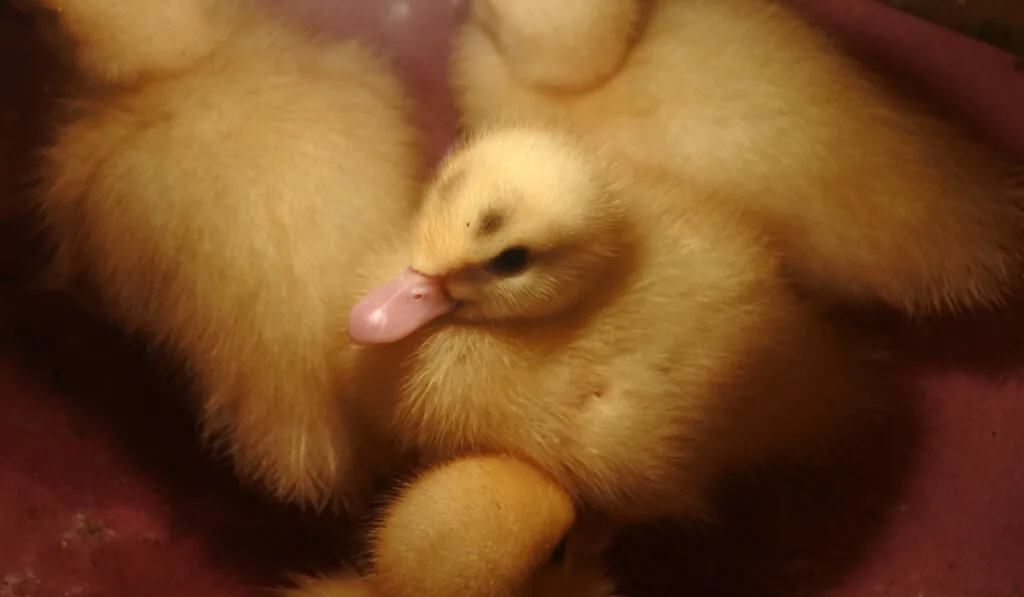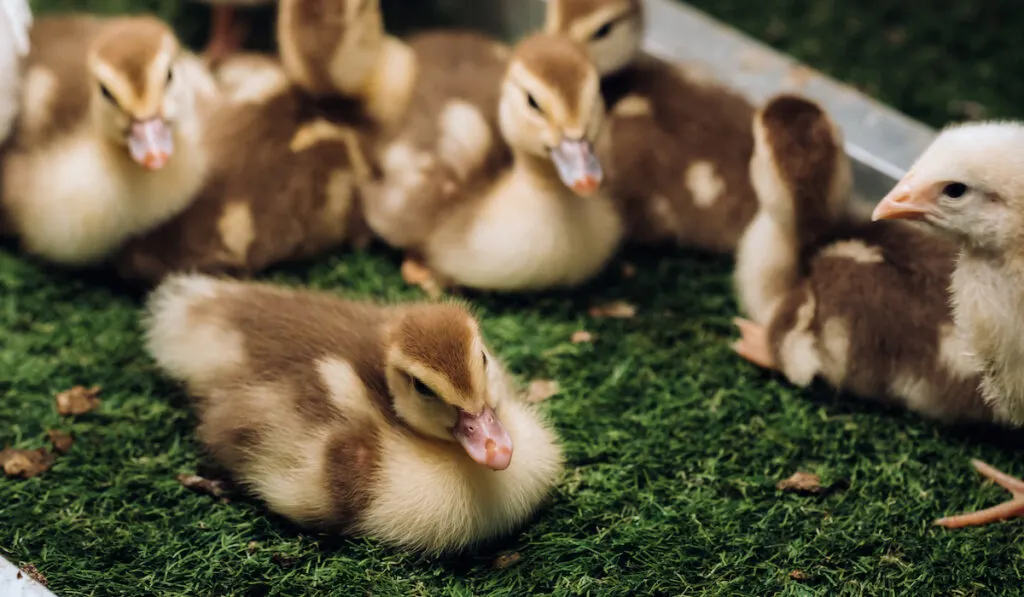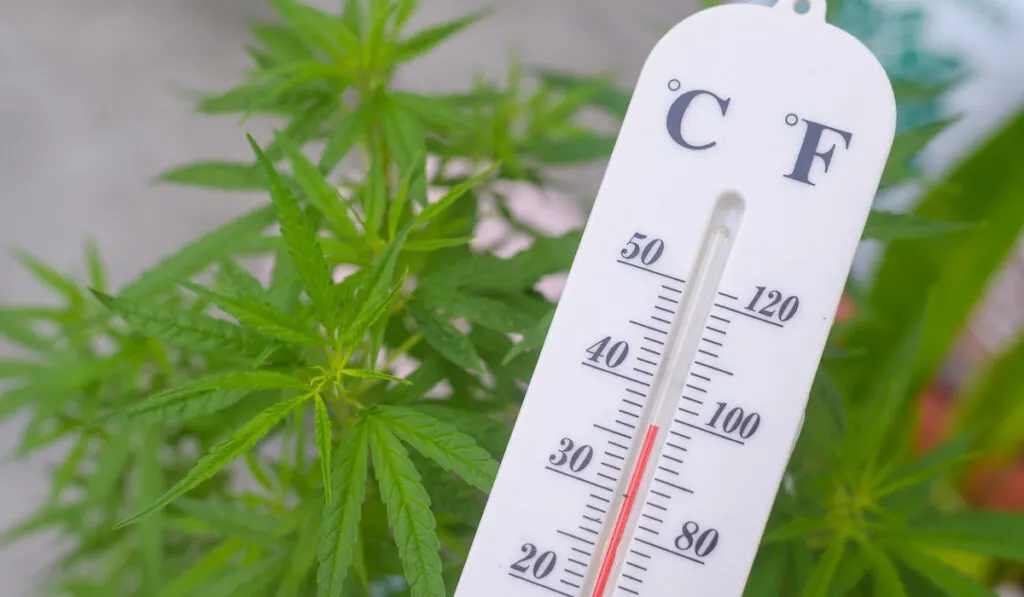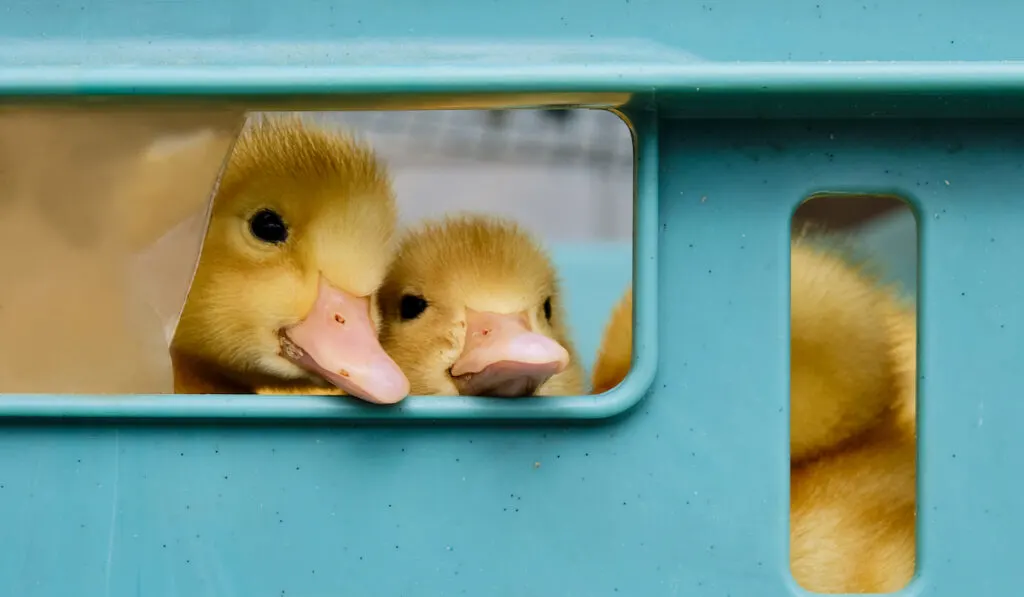Without fully-formed feathers, ducklings cannot warm themselves up, and without a source of heat, they can get harmed by cold. To avoid this, heat lamps are usually provided as a source of heat for ducklings. But heat lamps are not the only option and they are not without disadvantages. So, here some tips for raising ducklings without a heat lamp.
Table of Contents
Raising Ducklings Without a Heat Lamp
While heat lamps are commonly used to provide heat for ducklings, they may not always be available. Even when they are available, you may not want to use them. One reason people shy away from using heat lamps is the fire hazard they pose.
Heat lamps are so common you may have thought it impossible to raise ducklings without one. But the good news is that there are alternatives. There are other heat sources you can use in raising your ducklings. Some of them are:
- Reptile Lamps – Small, ceramic heat bulbs are often used in reptile cages. These tend to be safer than full-size heat lamps due to their small size.
- Alternate Heat Source – Heat lamps are known to be fire hazards but using something like an EcoGlow brooder can be a wonderful option. They are not too pricy and available on Amazon.com.

In situations where there is no electricity, using the above heat sources might be impossible. In such cases, you will have to turn to bedding materials to generate warmth for the ducklings.
Some electricity-free brooding options for baby ducks include:
- Feather Duster – Feather dusters can provide a way for ducklings to snuggle together and keep warm. Be sure to use one made from real feathers (like this one ). You’ll also want to buy enough so that there is plenty of space for all of your ducklings to snuggle in.
- Lots of Friends – More ducklings in a brooder generate more heat. While you don’t want a brooder that is too full, having at least three ducklings will help them keep each other warm.
- Hot Water Bottle – Hot water bottles are easy to find on sites like Amazon and will provide a decent amount of warmth for ducklings in a pinch. Keep in mind, though, that they would need to be changed as they cool down.
Having feather dusters, straw beddings, or dry shavings in the brooder can help keep ducklings warm without a heat lamp.
Keep in mind that these bedding materials might not be sufficient by themselves when it’s very cold. So, if you intend to use only bedding materials to keep the ducklings warm, you must be diligent about monitoring them to be sure they are warm enough.

The Right Temperature
When the ducklings are still very young, they require higher temperatures to survive. This requirement is due to the absence of mature feathers on them. But as the baby ducks grow, the feathers grow and the temperature required to keep them warm and alive drops gradually.
Generally, on the first day, ducklings need a temperature of 90 – 95 °F. But in hotter areas and during hotter seasons, the temperature needed might be lower. When choosing the right temperature for your ducklings, you have to also consider the environmental temperature.
You do not have to get a precise value for the temperature. But you have to ensure that the temperature falls within a range that is going to be comfortable for your baby ducks.
Age-Temperature Chart for Ducklings
The age and the average temperature requirement of ducklings are summarized in the table:
| Age | Required Temperature |
| 1 week | 95 – 88 F |
| 2 weeks | 88 – 81 F |
| 3 weeks | 81 – 74 F |
| 4 weeks | 74 – 67 F |
| 5 weeks | 67 – 60 F |
| 6 weeks | 60 – 53 F |
Monitor the Heating Temperature
Although ducklings need heat, they do not fancy heat. So, when it is getting too hot or they are exposed to heat for too long, they get uncomfortable. If nothing is done about the excess heat, it can harm the ducklings too.

Overheating can be just as dangerous for a duckling as being too cold.
When the heat is too much, ducklings tend to move away from the heat source as far as they can. They also pant and raise their wings away from their body when they feel too hot.
Ducklings that are too cold will huddle underneath the heat lamp if there is one or huddle together in a corner. They will often chirp loudly as well.
You must monitor the temperature in your brooder to ensure that the ducklings are comfortable.
One of the easiest ways to do this is by placing a thermometer in the brooder. You can also monitor the response of the ducklings to the temperature.
Combining these two methods is the best way to ensure your ducklings are comfortable.
A brooder full of healthy, happy ducklings is easy to spot. They will usually be spread out throughout the brooder exploring and playing. They won’t all be huddled in one spot close to, or away from, the heat source.
Taper the Temperature
After the first day, the temperature requirement of the ducklings starts dropping. You have to taper the temperature with each passing day or week. In some cases, the temperature is tapered by 1 °F every day.
Some other breeders choose to taper by 5 – 10 °F every week. You may choose to taper daily or weekly. Whatever method you choose, always ensure that the ducklings are comfortable with the temperature.
Do Ducklings Need Light at Night?

While the ducklings are in the brooder, you have to provide external heat for them throughout the day and even at night. While you should make sure they have a somewhat normal day/night cycle in the brooder, they do not need a light at night.
Most heat lamps offer a warm glow. Usually, this is a red light, but sometimes white. If you are using an alternate heat source for your ducklings you do not need to give them any supplemental light at night.
When Ducklings Get Feathers
Newly hatched ducklings come with fluffy plumage. This plumage is not mature feathers and is not as efficient as mature feathers. This is why ducklings usually need an external source of heat for warmth in their early days.
On average, mature feathers start to appear on ducklings after 3-5 weeks. In some cases, it may take as long as 9 weeks.
When the mature feathers start developing, you may let the ducklings spend time outside during the day. This time outside will not only help your ducklings grow, develop, and explore, it will also help keep your brooder cleaner by NOT having them in it!
Ideally, make sure they have a box or other shelter to get away from any wind until they are fully feathered.
When you let them out, put safety measures in place to ensure they are not attacked as well.
Of course, letting the duckling out at this stage depends on the ambient temperature and the season. During winter, when it is cold outdoors, you should not let the ducklings out.
When in doubt, stay outside with them to supervise so that you can see if they start to huddle up and get cold.
Getting the Ducklings off Heat
How quickly you get the ducklings off heat depends on how fast they grow and the average temperature of the environment.
On average, it takes 2 – 6 weeks for ducklings to get off heat entirely. This can take longer but it is usually not shorter than 2 weeks.
In hotter areas, the ducklings will usually become uncomfortable with the heat quickly and you may find you can transition them away from it earlier. This is especially true if you are brooding them inside the house where the ambient temperature is likely to be near 70 degrees F.
In colder areas, the ducklings will naturally need heat longer. Keep in mind that if their mature feathers have not fully formed, you may reduce their exposure to heat but not take them off it completely.

When Ducklings Can Go Outside
Ducklings can start going outside when they are about 5 weeks old. At this age, their mature feathers have started growing out and they do not need heat like they used to. You can let them stay outdoors during the day and get them back in at night.
At 8 – 9 weeks when the mature feathers have fully formed, you can let the ducklings stay outside. At this point, they already have enough feathers to cater to their temperature requirements.
You should, of course, consider the ambient temperature before you let them out. Even with fully formed feathers, they may be unable to survive extremely cold conditions.
Generally, their feathers provide enough warmth for them even at low temperatures. But the feathers might be insufficient when they have a disease and when it is extremely cold (<20 °F).
Provide your ducks with a duck house to use at night. This should be at least three sides but preferably four (like a dog house). When cold winds blow at night your ducks will appreciate having a nice, cozy duck house to hang out in.
Temperatures Too Cold for Ducklings
In the first few weeks (2 – 3 weeks) of a duckling’s life, temperatures below 70 °F may be too cold for them. By the 4th week, when their feathers should be starting to grow in nicely, do not go below 50 °F.
At night, the temperature can fall below 50 °F. This is why at this age, the ducklings are usually returned inside at night after they have been let out during the day.
When ducklings become ducks, they become more tolerant of cold. Relative to chickens, ducks can tolerate colder temperatures. On average, ducks can tolerate temperatures as low as 20 °F.
Resources
- https://backyardpoultry.iamcountryside.com/coops/duck-shelters-for-winter/
- http://www.hoffmanhatchery.com/brooding.html
- http://iduckn.com/baby-ducks-guide-5-things-you-must-know/
- https://thehipchick.com/raise-chickens-without-a-heat-lamp/
- https://www.hgtv.com/outdoors/gardens/animals-and-wildlife/raising-ducks-caring-for-ducklings
- https://www.fresheggsdaily.blog/2012/02/basic-duckling-care-raising-healthy.html?m=1
- https://www.hobbyfarms.com/9-tips-raising-ducklings/
